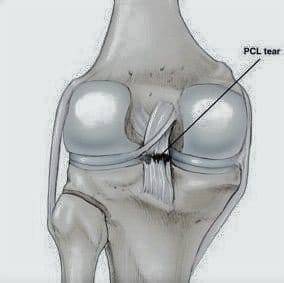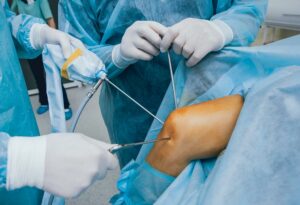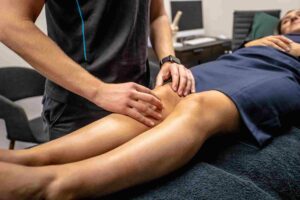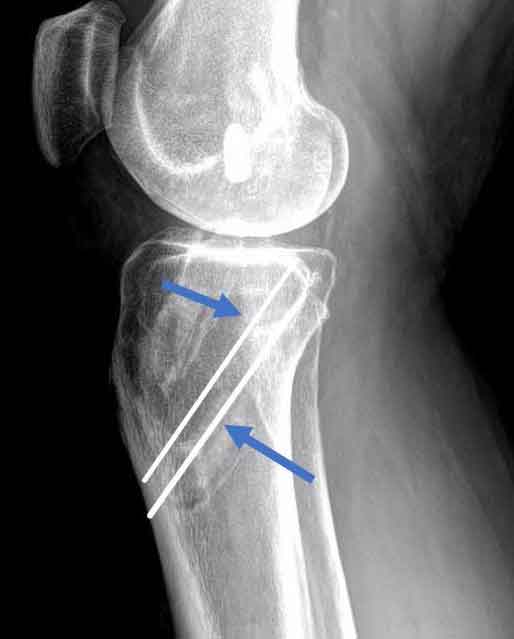If you have a torn PCL, you may be feeling frustrated and confused about what to do next. You may be wondering if surgery is the only option, or if there are any other treatments available. In this article, we will discuss the treatments for torn PCL and provide guidance on how to get back to running again.
Contents
What Is Torn PCL?
 The posterior cruciate ligament (PCL) is one of four major ligaments in your knee that provide stability. The PCL runs from the back of your thighbone (femur) to the front of your shinbone (tibia). It is a condition that can be caused by overuse or an injury, such as a fall or a direct hit to the knee.
The posterior cruciate ligament (PCL) is one of four major ligaments in your knee that provide stability. The PCL runs from the back of your thighbone (femur) to the front of your shinbone (tibia). It is a condition that can be caused by overuse or an injury, such as a fall or a direct hit to the knee.
A torn PCL is a serious injury that can cause long-term problems with knee stability and function. Fortunately, there are a variety of treatment options available to help you heal and get back to your normal activities.
There are several things that can cause a PCL injury:
- A direct hit or blow to the knee, such as from a fall or a car accident
- Sudden stopping or changing directions while playing sports
- Slowly making the same motion over and over again, such as during running or bicycling
The most common symptom of a PCL injury is pain in the knee. You may also feel a pop or snap when the injury happens. Other symptoms may include:
- Swelling in the knee
- Bruising in the knee
- Instability or “giving way” of the knee
- Difficulty straightening the leg
If you have any of these symptoms, it’s important to see your doctor right away. They can perform a physical examination and order tests, such as an MRI, to diagnose a PCL injury.
What Are Some Treatments For Torn PCL?
There are various ways that doctors treat a torn PCL. Some of the common ones include:
Patient Education
It is one of the most important things that you can do for yourself if you have a torn PCL. Learning all that you can about your injury will help you to understand the different treatment options and make the best decisions for your care. For example, when you know the risks and benefits of each type of treatment, you can make an informed choice about whether or not to have surgery.
Rest and ice
The first step in treating a torn PCL is to reduce the swelling with rest and ice. You will also need to avoid activities that aggravate your symptoms. This may mean using crutches or a knee brace to avoid putting weight on your injured leg. In fact, it is important to keep weight off of your leg as much as possible in the first few days after the injury.
Pain management
 If the pain is severe, you must consider some pain reliever medicines. These will help you so that you can do the physiotherapy and other treatments.
If the pain is severe, you must consider some pain reliever medicines. These will help you so that you can do the physiotherapy and other treatments.
If the pain is not severe, over-the-counter medicines can be useful. Some common medications might include ibuprofen or acetaminophen. Just be sure to follow the dosage instructions on the package. In addition, a corticosteroid injection can be given to help with pain and swelling in the knee joint. This is usually done if other treatments haven’t worked.
Manual therapy
This is one of the most common treatments for a torn PCL. It helps to improve the range of motion and reduce pain. Manual therapy works by applying pressure and stretching the muscles and joints. For example, it might be used to massage the muscles around the knee or to stretch the hamstrings.
Strengthening exercises
Treatment for torn PCL definitely includes some strengthening exercises because the PCL provides support and limits the amount of forward and backward movement of your knee. So, by strengthening the muscles around your knee, you will help to take some pressure off of the ligament, which will in turn help it to heal properly.
Some basic strengthening exercises that you can do at home include:
- Quad sets: While lying on your back, tighten the muscles in your upper leg to lift your foot off the ground. Hold for five seconds, and then relax.
- Hamstring curls: Sit on the ground with a towel looped around your foot. Pull your leg up towards your body, holding for five seconds before releasing.
- Leg lifts: Sit on the ground with your legs extended in front of you. Slowly lift one leg about six inches off the ground and hold for five seconds before lowering back down. Repeat with the other leg.
Functional training
It is important to start from the basics of movement and re-educate your body on how to perform basic functions correctly. This is where a physiotherapist can help you out immensely. For example, when your muscles are not firing correctly, it can place extra stress on your joints leading to injuries.
A physiotherapist will help you through a series of exercises specifically designed to fire the correct muscles in the right pattern. This is called ‘muscle re-patterning. In this way, your body will start to relearn how to move correctly and efficiently, taking the load off of your injured joint and helping you to avoid future injuries.
Braces and other devices
There are a number of braces and other devices that can be used to support the knee and protect the patellar tendon following surgery. The type of brace or device prescribed will depend on the individual patient’s needs and preferences.
Some patients may need to wear a hinged knee brace for added support. Others may prefer to use a knee sleeve or wrap. Patients will also need to use crutches for a period of time following surgery. The length of time will depend on the individual patient’s healing process.
Surgery
 For more severe tears, surgery may be necessary in order to repair the ligament. There are two main types of surgery that can be performed:
For more severe tears, surgery may be necessary in order to repair the ligament. There are two main types of surgery that can be performed:
- Arthroscopic surgery: This minimally invasive surgery is done with small incisions and a camera. It is often used to trim or repair damaged ligaments.
- Open surgery: This type of surgery is more invasive, as it involves making a large incision in order to access the knee joint. It is typically only used when the ligament is severely damaged.
It is important to remember that surgery is considered a last resort option. Most patients will be able to heal fully without the need for surgery.
Overall, these are some common treatments for torn PCL. Please follow your doctor’s orders and recommendations for the best possible outcome and recovery.
Can A PCL Tear Heal On Its Own?
Many people believe that a torn posterior cruciate ligament (PCL) will never heal on its own and surgery is always required. This isn’t true. In fact, most PCL tears can heal without surgery if the knee is treated correctly.
However, even if a torn PCL can heal without surgery, that doesn’t mean that it will heal quickly or easily. It often takes several months for the ligament to fully heal. And even after it heals, the knee may never be as strong as it was before the injury.
So, while surgery may not be necessary to heal a torn PCL, it is often the best option for athletes or other people who want to return to their pre-injury level of activity. There should be a decision made with the help of an orthopedic surgeon specializing in sports medicine.
Can I Walk With A Torn PCL?
 It is possible to walk with a torn PCL, but it will likely be painful. Depending on the extent of the tear, you may also experience instability in the knee joint. This can make it difficult to walk without support.
It is possible to walk with a torn PCL, but it will likely be painful. Depending on the extent of the tear, you may also experience instability in the knee joint. This can make it difficult to walk without support.
If you have a partial tear, you may be able to treat it with conservative methods such as rest, ice, and physical therapy. However, if the tear is complete or the knee is unstable, you may require surgery to repair the ligament.
Overall, you should try to avoid putting weight on the knee if it is painful. If you must walk, use a cane or crutch for support. And, finally, if you are experiencing instability, you should wear a knee brace to help keep the joint in place.
Conclusion
In conclusion, treatments for torn PCL may seem like a daunting task, but with the proper guidance and support, you can make a full recovery and get back to the activities you love. With the help of your healthcare team, you will be able to develop a treatment plan that works best for you and your injury. Remember to stay positive throughout your journey and trust in the process.
Consider Physical Therapy which has always been proven to help patients recover from pain. Hence, if you’re experiencing Back pain, Shoulder pain, Knee pain, Neck pain, Elbow pain, Hip pain, or Arthritis pain, a physical therapist at MantraCare can help: Book a physiotherapy session.


